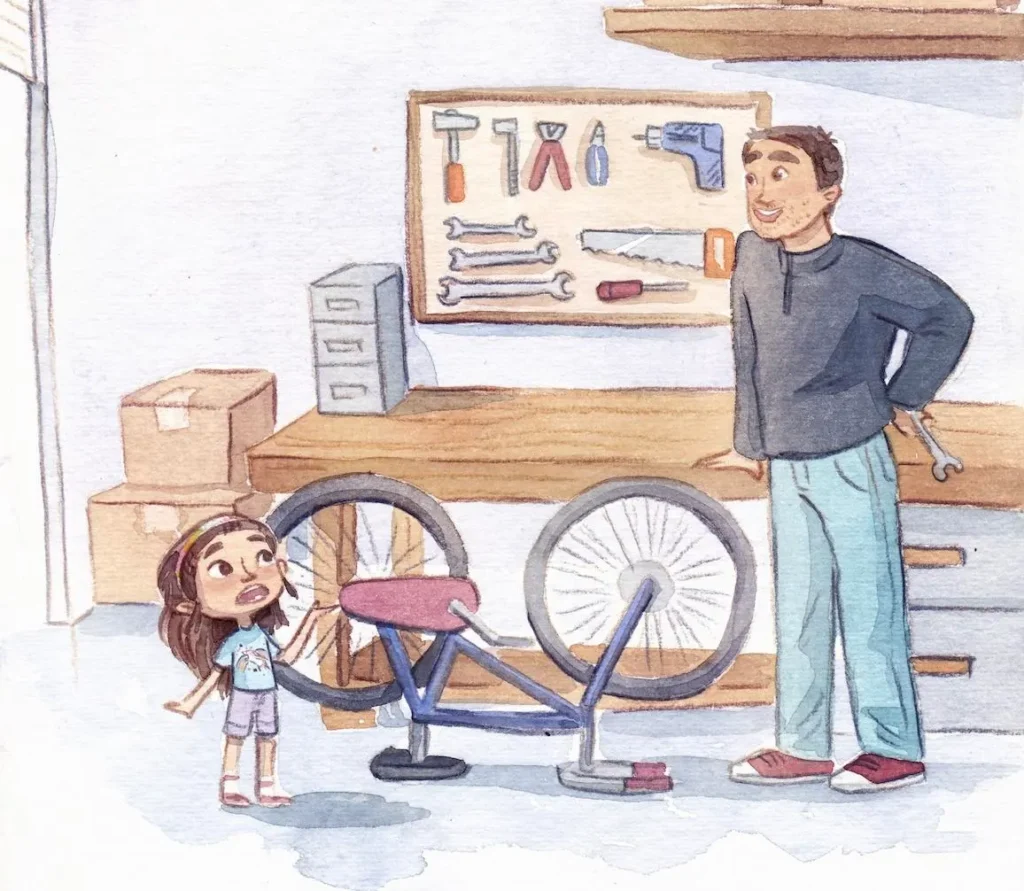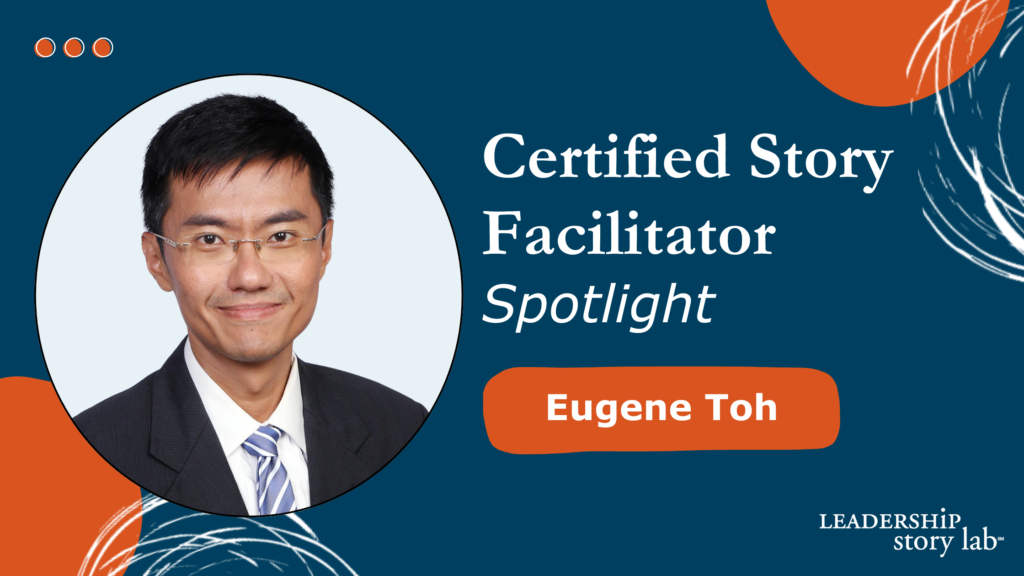April 5, 2017 / Esther Choy

It’s a typical workday at a large company in the suburbs. Danielle Largay looks at her calendar and sees she has a presentation to attend. What does she expect? Presentations at her company—like those at many others—tend to be very fact based: “This is where we are, this is where we’re going, here’s the takeaway.” They make a data-grounded case for how the project will succeed, with facts and data aplenty every time. Every presentation is a data presentation, and each one feels the same.
“When you copy the same format and structure as every other presentation in your company, you think you are playing it safe, but it’s actually a very risky move. It’s risky because your presentation will blend in with everything else. It becomes unmemorable,” says Danielle.
Throughout her career, Danielle has noticed the toll that “data only” takes on an audience. “People’s eyes glass over,” she says. When the audience’s attention drifts, the message itself gets lost. The ideas die because no one hears them, let alone becomes inspired to act on your message.
Danielle decided to change all that. For the average employee to feel like storytelling was worth the risk, a leader would need to communicate that it was okay to break the mold. So she prepared a 20-minute presentation for the “heavy hitters” at her organization—namely, the C-Suite—to convince them to make full use of storytelling for everyday business communication… by telling them stories.
Danielle was uniquely suited to this task. In 2013, she transitioned from a career in Hollywood to a marketing and strategic planning career. In Hollywood, she had been immersed in stories, advising senior executives on over 120 films and restructuring over 40 scripts to increase their marketability. Now, as manager of strategic planning and business development, she applies what she has learned about creating compelling stories, “which lies at the heart of all great marketing,” she says.
Still, Danielle was aware that storytelling was a “slightly unique, left-field” topic. It’s not a flashy new technology. Rather, she says, it’s old—as old as people sitting around campfires before the dawn of civilization.
Why should busy senior executives pay attention to her for 20 minutes? How could she get everyone in the audience to care?
Making the Case for Better Data Presentations
At a Leadership Story Lab training at Catalyst Ranch in January 2017, Danielle talked with me about how to make her case to executives. To sell storytelling to this audience, I recommended that she reframe from mentioning the intrinsic value of storytelling – namely, emotional, fun, engaging, and the likes. Instead, I suggest that she focus on their point of view—what good can storytelling bring to their teams and divisions? She identified tangible benefits like:
- Improving sales
- Promoting buy-in when the company was taking a new strategic direction
- Strengthening relationships between team members
- Enhancing hiring processes by letting the employer get to know the candidates.
These benefits showed that “stories have far more power than we realize,” Danielle says. Danielle structured her talk carefully for her busy audience. She used the book “Talk Like TED,” especially a section that analyzes the successful structure of a 2005 Stanford commencement address by Steve Jobs and created a message map for her presentation.
First, she chose the headline, which is the one single overarching message you want your audience to remember. Second, she supported the headline with three key messages. And third, she reinforced those three messages with stories, statistics or examples. Danielle notes that this 3 x 3 structure is crucial because, generally, listeners can only hold three ideas in their minds at once.
Providing an Example
Most importantly, Danielle started the presentation with a powerful story of her own.
One Thursday night, she was watching a movie when her arm started to itch. She was almost done watching the movie and decided to ignore the itching. When she did finally look down at her arm, she realized her arm was covered in hives. She ran to a 24-hour CVS, bought some Benadryl and the hives disappeared, so she thought she was fine.
But the hives were back on Friday night. And Saturday night. And Sunday night. And every night for a week until she finally managed to go to the doctor to discover that she had developed an allergy to nuts.
To help her make informed decisions and manage her allergy, the doctor showed her charts and data points. Since her job is to make decisions based on data, Danielle expected that seeing charts and data would naturally lead her to the most logical decision. But that’s not what had happened.
At that doctor’s appointment, all she could think about was that she was late for work and would have to cancel her day’s appointments. She wanted to make a data-driven decision. But that day with the doctor, there was “so much other stuff in my head,” she said.
Fortunately, before letting her rush back to work, Danielle’s doctor mentioned a woman named Sarah. Sarah, like Danielle, developed a food allergy later in life. Sarah was out for dinner with a friend one day when had a terrible reaction to something in the food and she began to go into anaphylactic shock. But Sarah had her EpiPen with her, so she stabbed herself in the leg with it and then went about her evening, thinking she was fine.
Three hours later, Sarah was dead.
The doctor looked at Danielle gravely: “All an EpiPen does,” he said, “is buy you time. If you ever have to use it, go to the hospital immediately.”
The information that hadn’t been connecting suddenly became all too real. Her doctor had told her a story about the data and captured her emotions. “He didn’t tell me Sarah’s story because he wanted to scare me or because he wanted me to take a specific medication,” said Danielle. “He told me this story because he wanted me to live.”
To close her presentation, Danielle challenged her audience to think about which ideas they “wanted to live.” The ideas that live, she explains, are the ideas conveyed through stories. Stories are 22% more memorable than fact, she told her audience, citing a Stanford study—and people work harder when you tell them stories.
To close her presentation, she wanted to give her audience the tools they would need so they too could tell great stories, so she shared resources from Leadership Story Lab’s training at Catalyst Ranch in January 2017. Storytelling can feel “boundless,” Danielle says, but the frameworks from Leadership Story Lab gave the topic structure, which makes it accessible to those who were newer to storytelling.
There was immediate interest once my storytelling presentation was complete. “People came up to me and said how memorable and brave the presentation was,” Danielle said. “But it I don’t think what I did was that unique; all I did was present the same information in a different way. As Brené Brown says, stories are just data with a soul.”
Related Articles
3 Principles of Data Storytelling
Want frameworks to make storytelling accessible? Schedule a complimentary communication training consultation today. For more tips and insights on storytelling, sign up for our guide.
My new book, Let the Story Do the Work (published by AMACOM BOOKS), is now available for pre-ordering!
Better Every Story
Leadership Transformation through Storytelling
"This is an amazing and insightful post! I hadn’t thought of that so you broadened my perspective. I always appreciate your insight!" - Dan B.
Get Esther Choy’s insights, best practices and examples of great storytelling to your inbox each month.


